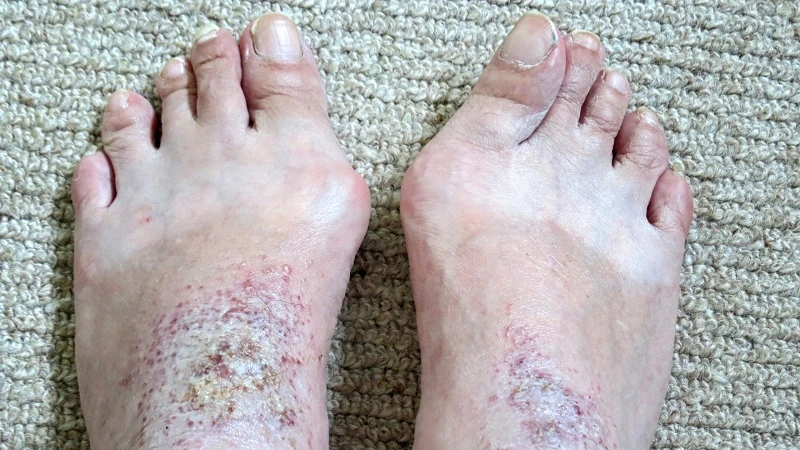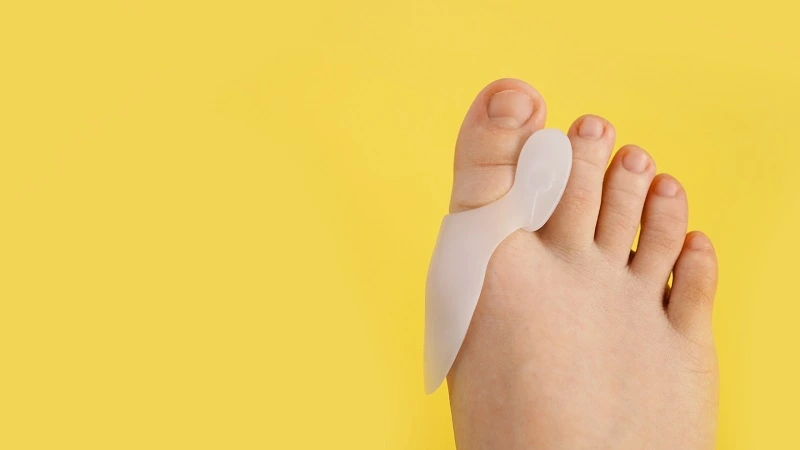Lapiplasty Bunion Surgery is a cutting-edge surgical procedure designed to correct a bunion, a common foot condition where the big toe angles towards the second toe. The procedure involves realigning the bones in the foot to create a more stable and functional joint, reducing pain and discomfort associated with bunions. Like any other surgical procedure, in lapiplasty bunion surgery pros and cons are along with.
In this article, we will explore the pros and cons of Lapiplasty Bunion Surgery to help individuals make an informed decision about whether this surgery is right for them.
Pros of Lapiplasty Bunion Surgery
The Pros of Lapiplasty Bunion Surgery include:
- Improved Foot Function: Lapiplasty Bunion Surgery corrects the misalignment of the bones in the foot, which leads to improved foot function and reduced pain and discomfort. This means that individuals who have undergone the procedure will be able to walk and perform daily activities with greater ease and comfort.
- Reduced Pain and Discomfort: Lapiplasty Bunion Surgery addresses the root cause of bunion pain by realigning the bones in the foot, which reduces pain and discomfort. The procedure also eliminates the pressure and friction that can be caused by a bunion, which leads to further pain relief.
- Quicker Recovery Time: Compared to traditional bunion surgery, Lapiplasty Bunion Surgery typically results in a quicker recovery time. This is because the procedure is minimally invasive and utilizes advanced techniques to minimize scarring and reduce post-operative discomfort.
- Better Cosmetic Results: Lapiplasty Bunion Surgery produces better cosmetic results than traditional bunion surgery. This is because the procedure creates a more stable and functional joint, which results in a more natural appearance of the foot.
Overall, Lapiplasty Bunion Surgery offers a number of benefits for individuals who are looking to correct a bunion.
By improving foot function, reducing pain and discomfort, and resulting in a quicker recovery time and better cosmetic results, this procedure can be an excellent solution for those seeking relief from the symptoms associated with bunions.
Read Also: Bunion vs Bone Spur: The Battle of the Foot Ailments

Cons of Lapiplasty Bunion Surgery
- Risk of Complications: As with any surgical procedure, there is a risk of complications associated with Lapiplasty Bunion Surgery. This can include infection, nerve damage, and bleeding. In some cases, individuals may also experience a relapse of the bunion after the procedure.
- High Cost of the Procedure: Lapiplasty Bunion Surgery is a cutting-edge procedure that utilizes advanced techniques and technologies, which can make it more expensive than traditional bunion surgery. This can be a significant drawback for individuals who are concerned about the cost of the procedure.
- Long-term Pain and Discomfort: Although Lapiplasty Bunion Surgery is designed to reduce pain and discomfort associated with bunions, there is a chance that individuals may experience long-term pain and discomfort after the procedure. This can be due to nerve damage, scarring, or other complications that may arise.
- Possible Relapse of the Condition: In some cases, individuals may experience a relapse of the bunion after undergoing Lapiplasty Bunion Surgery.
This can be due to the progression of the condition or other factors such as genetics, age, or lifestyle habits.
Overall, while Lapiplasty Bunion Surgery offers a number of benefits, it is important to weigh the potential cons before deciding if this procedure is right for you.
Factors such as the risk of complications, the cost of the procedure, and the potential for long-term pain and discomfort should be taken into consideration before making a decision.
Read Also: Bunion vs Bone Spur: The Battle of the Foot Ailments

Factors to Consider Before the Surgery
Before deciding to undergo Lapiplasty Bunion Surgery, there are several factors that individuals should consider:
- Patient’s Age and Overall Health: The age and overall health of the patient are important considerations when deciding if Lapiplasty Bunion Surgery is the right choice. Individuals who are elderly or have underlying health conditions may be at a higher risk for complications and may need to weigh this against the benefits of the procedure.
- The severity of the Bunion: The severity of the bunion is also a factor to consider before undergoing Lapiplasty Bunion Surgery. Individuals with more severe bunions may require more extensive surgery and may have a longer recovery time.
- Personal Lifestyle and Activities: It is important to consider how the bunion affects the individual’s daily life and activities before deciding to undergo Lapiplasty Bunion Surgery. This can help individuals determine if the benefits of the procedure will outweigh the potential risks and drawbacks.
- Expectations and Goals of the Surgery: It is important to have realistic expectations and goals for the surgery. Lapiplasty Bunion Surgery is designed to correct a bunion, but it is not a cure-all solution. Individuals should have a clear understanding of what the procedure can and cannot do, and should discuss their expectations and goals with their doctor before making a decision.
By taking these factors into consideration, individuals can make an informed decision about whether Lapiplasty Bunion Surgery is the right choice for them.
It is also important to research the procedure and consult with a doctor before making a final decision, to ensure that all questions and concerns are addressed.

Alternative Treatments
There are a number of available treatment options for bunion pain and inflammation. Surgery is the most common treatment, but it has some associated risks. Other treatments include anti-inflammatory medications, and non-surgical treatments such as orthotics, and injections.
Bunion surgery is typically performed to remove the bunion or part of the big toe joint. The surgery may be done on one or both feet. Options include:
- Bunionectomy: This is the most common type of bunion surgery and involves removing both the bunion and the big toe joint. This can be done through a small incision in the foot or an open operation. Recovery time depends on the extent of surgery but generally takes around two weeks.
- Bunionectomy with toe transfer: In this procedure, only the bunion is removed and the big toe is transferred to another location on your foot (usually to the other side). This can result in less pain and shorter recovery times than a standard bunionectomy. However, it requires more specialized care and may not be suitable for everyone.
- Bunion reduction: This involves reducing or eliminating the size of the bunion using surgical techniques (such as debridement or excision). It’s usually more conservative than other types of surgery and results in less pain and shorter recovery times, but it may not be suitable for all patients.
- Bunion fusion: In this procedure, both the bunion and the big toe joint are replaced with a plastic or metal implant. This can be more challenging than other types of surgery, but it results in less pain and shorter recovery times.

There are also a number of non-surgical treatments that can be used to treat bunion pain and inflammation. These include:
- Splinting: Splints help to reduce inflammation and pain by limiting movement in the affected area. They should be worn for around four to six weeks and may need to be replaced as the healing process progresses.
- Medications: Anti-inflammatory medications (such as ibuprofen) can help to reduce pain and swelling in the bunion area. However, they may have side effects, so it’s important to discuss any medications you’re taking with your doctor before starting treatment.
- Orthotics: Orthotics are special shoes or inserts that help to correct imbalances in your foot (such as incorrect pronation or supination). They may also help to reduce pain and inflammation in the bunion area. Orthotics can be expensive, but they may be worth considering if other treatments haven’t worked well enough.
Read Also: How Long Does it Take for Bunion Splint to Correct?
Conclusion
In conclusion, Lapiplasty Bunion Surgery is a cutting-edge surgical procedure designed to correct a bunion and reduce the associated pain and discomfort.
While the procedure offers a number of benefits, it is important to weigh the potential pros and cons. It is also important to consider factors such as the patient’s age and overall health, the severity of the bunion, personal lifestyle and activities, and expectations and goals of the surgery.
By researching the procedure and consulting with a doctor, individuals can make an informed decision about whether Lapiplasty Bunion Surgery is right for them.
References
Here are a few medical references related to Lapiplasty Bunion Surgery:
- “Lapiplasty: A New Standard in Bunion Correction” by Dr. Daniel J. Crawford, published in The Journal of Foot and Ankle Surgery.
- “Three-dimensional Correction of Hallux Valgus Deformity Using the Lapiplasty® Procedure: A Prospective Study” by Dr. James W. Stavrakis and Dr. Kyle R. Reider, published in The Journal of Bone and Joint Surgery.
- “Lapiplasty®: A Novel Three-dimensional Correction of Hallux Valgus Deformity” by Dr. Michael S. Lee and Dr. Charles S. Saltzman, published in the Journal of Orthopaedic Surgery and Research.
- “A Prospective Study of Lapiplasty® for Correction of Hallux Valgus: Early Results” by Dr. Douglas R. Van den Berg and Dr. Frank J. Paladini, published in the Journal of Foot and Ankle Surgery.
These references provide in-depth information on Lapiplasty Bunion Surgery, including its benefits, risks, and outcomes.
By reviewing these articles, individuals can gain a better understanding of the procedure and make a more informed decision about whether it is right for them.



